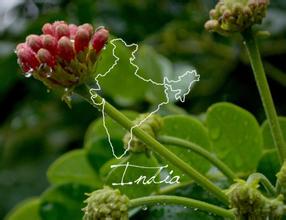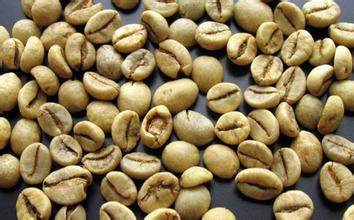American Coffee Manor Kona Coffee beans from Hawaii Coffee region of the United States have a rich flavor and aroma.

Flavor and taste characteristics: rich and fragrant taste, uniform acidity, full particles, with cinnamon aroma.
When it comes to Hawaii, the first thing that comes to mind is the swaying palm trees and the vast flat sandy beaches, as well as the endless blue sky and blue sea. The unique beauty of Hawaii also gives local coffee a unique attraction.
Hawaii is the only state in the United States that grows coffee. Coffee is grown on five major islands in the Hawaiian Islands, namely Oahu, Hawaii, Maui, Kauai and Moroca. Different islands also produce coffee with their own characteristics. Kona Coffee is produced in the west and south of the Kona region of Hawaii, spread over the slopes of Horala and Mauna Loa, which is 32 kilometers long and 3.2 kilometers wide.
It is said that coffee was first grown in Hawaii in 1813 when a Spaniard first grew coffee in the Manoa Valley on the island of Oahu, which is today the main campus of the University of Hawaii. In 1825, an English agronomist named John Wilkinson transplanted some coffee from Brazil to grow in the coffee garden of Chief Birch on the island of Oahu. Three years later, an American missionary named Samuel Riveland Rags brought the branches of the coffee tree from Birch Emirates Garden to Kona, a descendant of the Arabica coffee tree that first grew on the Ethiopian plateau. Kona Coffee still carries on its noble and ancient lineage.
The good quality of Kona coffee should be suitable for the right geographical location and climate. Coffee trees grow on the slopes of volcanoes, and their geographical location ensures the altitude needed for coffee growth; the dark volcanic ash soil provides the necessary minerals for coffee; the climate is very suitable, and the morning sun gently passes through the steamy air. In the afternoon, the mountains will become more humid and foggy, the white clouds surging in the air are the natural umbrellas for coffee trees, and the evening will become sunny and cool. Because of the suitable natural conditions, the average yield of Kona coffee is very high, reaching 2240 kg per hectare, while the yield of coffee in Latin America is only 600 kg to 900 kg per hectare.
Kona coffee has always been grown at home. At first, only men were allowed to work in the coffee garden, and later women joined in. This kind of family production of Hawaiians preferred to rely on the efforts of their families rather than hiring workers to work, so it was normal for Hawaiians to have eight or nine children at that time. Since then, new immigrants from the Philippines, the United States and Europe have come to Hawaii to engage in the coffee industry. Over time, Hawaii has formed a social atmosphere that centers on family culture and is easy to absorb foreign cultures. and make it a major feature of Hawaii. The harvest season of Kona coffee is from late August to January of the following year, when farmers pick the ripe fruit in batches and get coffee beans after processing.
Kona coffee uses water washing and natural drying. Hawaii's clean and sweet mountain spring water provides the ideal conditions for washing, which creates the bright appearance and pure and fresh taste of Kona coffee beans. The washed coffee beans are placed on a huge plate and dried naturally by the sun.
Hawaiian Kona coffee beans have the most perfect appearance, its fruit is extremely full, and bright, it is the most beautiful coffee beans in the world. Kona Coffee is fresh, crisp, medium-bodied, slightly sour and full-bodied, with a long finish. The taste of Kona coffee is generally mild because it is not as mellow as Indonesian coffee, not as alcoholic as African coffee, let alone as rugged as Central and South American coffee. Kona Coffee has a blend of wine, fruit and spice aromas, as charming as the colorful colors of the volcanic island and a long aftertaste.
Source: Dangdang
Important Notice :
前街咖啡 FrontStreet Coffee has moved to new addredd:
FrontStreet Coffee Address: 315,Donghua East Road,GuangZhou
Tel:020 38364473
- Prev

Asian Coffee Manor Coffee production area Coffee Plantation A Coffee beans have rich flavor and taste.
Flavor and taste characteristics: uniform particles, rich taste, slippery and delicious. People who taste Indian coffee for the first time will feel a strong flavor of the sea because Indian coffee beans are dried by the salty sea breeze. The cultivation of Indian coffee originated from their colonists, the British. As early as the 17th and early 18th centuries, the British were not as addicted to tea as they are now.
- Next

Asian Coffee Manor Yemeni mocha coffee beans have unique flavor and slightly alcoholic flavor.
Flavor characteristics: spicy and exciting, unique flavor, slightly alcoholic aroma. When many people hear the name mocha coffee, they always think of the fancy coffee mixed with hot chocolate sold in cafes, but as a kind of individual coffee, Yemeni mocha has a unique charm and a long history. The Yemeni mocha is one of the oldest coffee in the world, but until recently,
Related
- Does Rose Summer choose Blue, Green or Red? Detailed explanation of Rose Summer Coffee plots and Classification in Panamanian Jade Manor
- What is the difference between the origin, producing area, processing plant, cooperative and manor of coffee beans?
- How fine does the espresso powder fit? how to grind the espresso?
- Sca coffee roasting degree color card coffee roasting degree 8 roasting color values what do you mean?
- The practice of lattes: how to make lattes at home
- Introduction to Indonesian Fine Coffee beans-- Java Coffee producing area of Indonesian Arabica Coffee
- How much will the flavor of light and medium roasted rose summer be expressed? What baking level is rose summer suitable for?
- Introduction to the characteristics of washing, sun-drying or wet-planing coffee commonly used in Mantenin, Indonesia
- Price characteristics of Arabica Coffee Bean Starbucks introduction to Manning Coffee Bean Taste producing area Variety Manor
- What is the authentic Yega flavor? What are the flavor characteristics of the really excellent Yejasuffi coffee beans?

